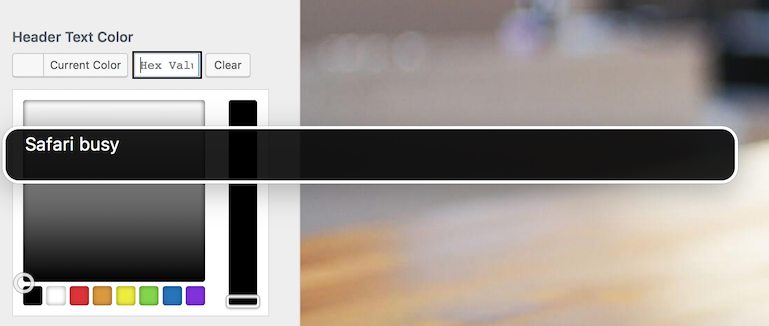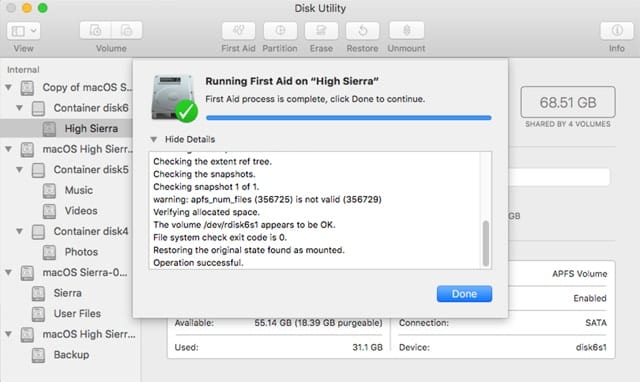Before you begin, make sure to back up your iMovie libraries, your media, and the iMovie app.

Try these troubleshooting steps in order
After trying each step below, test iMovie again to see if you've fixed your issue.
Oct 12, 2019 Install WD security and run the app. When prompted, plugin your Passport. It will then prompt you to enter your Passport password. From there, you’ll be greeted with options to update your security settings which include options to (1) remove your password, (2) set a new password, (3) add auto-unlock to your computer, and a few other items. Feb 21, 2020 Turn of Mac Hold Command + R keys and power Mac back up Enter recovery mode. Reinstall macOS. Download macOS Catalina, Mojave, or Sierra Create bootable USB Clean install macOS. MacOS has now been updated to 10.15, and many Mac users are trying to upgrade to the newest version.
Mac Pw Won't Work Installing New Software 2017
Restart your Mac
Reset NVRAM
If you use an external device with iMovie like a camera, reset NVRAM:
- Shut down your Mac.
- Disconnect all external devices other than your keyboard and your mouse.
- Reset NVRAM.
- Open iMovie and attempt to reproduce your issue.
- If iMovie works, reconnect devices one at a time until you can reproduce your issue. Restart your Mac after reconnecting a device if the device requires it.
- If iMovie still doesn't work, you might need to update your device's firmware or have the device serviced.
Update macOS and iMovie
Choose Apple menu > App Store, then click Updates. If an iMovie update is available, click Update to download and install it.
Check camera and media format compatibility
Make sure you're using a camera and media format that works with iMovie. If you can't find your camera listed or need further assistance, contact the manufacturer of the device for support.
If you're using a third-party video interface with your Mac, check with the manufacturer for firmware or other software updates for your device.
Test with a new library and project
You can create a new library and test project to check if the issue is with your library, project, or iMovie app. First, create a new library:
- Quit iMovie.
- While you press and hold the Option key, click the iMovie app in the Dock or double-click the iMovie app in the Applications folder.
- In the Open Library window, click New to create a new library.
- Name the test library 'Test iMovie Library,' then save it to the Desktop.
Next, create the test project using a built-in trailer template, then export it as a QuickTime video file:
- In iMovie, click Projects to return to the Projects view.
- Choose File > New Trailer, click the Action trailer template, then click Create.
- Choose File > Share > File, click Next, name the file 'Finish Line,' then save the video file to the Desktop.
Next, import the QuickTime video file into a new project in the new library:
- Click projects to return to the Projects view. In the window, click OK.
- Choose File > New Movie.
- Choose File > Import Media, then click Desktop in the Import window sidebar. Select the 'Finish Line.mov' file in the list, then click the Import Selected button.
- Select the clip in the browser, then press the E key to add the clip to the timeline.
- Try to recreate the issue you were having. For example, if iMovie quit when adding a transition, try to add a transition to the timeline.
If the new library and project work as expected, you've isolated the cause of your issue to the original library or project. Try to restore a previous version of the original library from a Time Machine or other backup.
Test iMovie with a new user account
Create another user account on your Mac, then test iMovie with the new user account.
Reset iMovie
Reset iMovie to default settings. Libraries won't be affected.
Reinstall iMovie
Delete iMovie, then redownload and reinstall it. Libraries won't be affected.
Still not working?
Learn more
Summary
Mac fails to boot or start after the macOS update. Whatever is preventing your Mac from starting up, follow these 5 simple solutions to get it working again. If you have data loss problem after macOS update, EaseUS Data Recovery Wizard for Mac provides tried-and-true data recovery service to you.
This page covers 5 fixes for Mac won't boot or start issue after macOS Catalina, Sierra or older macOS update issue. If you are with this issue, follow to make your Mac computer work now:
| Workable Solutions | Step-by-step Troubleshooting |
|---|---|
| Fix 1. Fix PRAM/NVRAM | Restart Mac > Hold Command+Option+P+R keys to turn on Mac...Full steps |
| Fix 2. Reset SMC | Shut down Mac > Unplug all cables > Plug in cables back after a few minutes...Full steps |
| Fix 3. Boot in Safe Mode | Start Mac > Hold 'Shift' until the login window appears > Release the key when login in window appears...Full steps |
| Fix 4. Run Disk Utility | Turn of Mac > Hold Command + R keys and power Mac back up > Enter recovery mode...Full steps |
| Fix 5. Reinstall macOS | Download macOS Catalina, Mojave, or Sierra > Create bootable USB > Clean install macOS...Full steps |
macOS has now been updated to 10.15, and many Mac users are trying to upgrade to the newest version. While for most it’s a usual pleasurable experience, for some this update had downsides. Some users complain that their Mac computers won't boot after installing new macOS Catalina. When Mac fails, it usually can't boot or start up properly. If you are faced with this situation, the most important thing should be recovering data from the unbootable Mac because:
- Your attempts to fix the Mac not booting issue may write new data on this Mac, which will overwrite the old data and make it irrecoverable.
- Recovering data before the complex fixes can avoid data loss.
EaseUS Mac data recovery software is able to recover data from unbootable Macs after update. It creates a bootable media that enables you to recover data from Mac hard drive (If you only have one Mac). What's more, it recovers data from failed internal Mac hard drive, APFS boot drive, and unmountable APFS boot volume, etc. If you have two Mac devices, take out the hard drive and connect it to the other Mac. Download EaseUS Data Recovery Wizard for Mac on that Mac device, and recover data from the hard drive.
Then, you can read on and Fix the 'Mac won't boot after update' issue after you have successfully got data from the drive.
1. Reset the PRAM / NVRAM
NVRAM refers to special memory sections on your Mac that store data that persists even when the Mac is shut off, such as volume settings and screen resolution. Resetting that data isn't harmful! In some cases, after performing this step, your Mac will restart normally.
- Restart your Mac
- Hold down all of these keys: 'Command', 'Option', 'P' and 'R', and turn on the Mac. (It's the same keys to reset the PRAM).
- Keep holding the keys down until you hear the Mac restart again.
You may see a progress bar on startup. If the progress bar fills up and then the Mac starts up, you're probably good to go. If not, reset SMC.

2. Reset the SMC
In some situations, you may need to reset your Mac's SMC (System Management Controller).
- Shut the Mac down.
- Unplug all cables.
- Wait for a few minutes.
- Plug the cables back in and start up the Mac.
If you've got a Mac desktop, unplug it for 15 seconds and then plug it in and after five seconds press the power button.
3. Boot Mac in Safe Mode
Safe Mode is a stripped-down version of the Mac operating system that can be useful if you are trying to troubleshoot issues with your Mac.
- Start your Mac, press and hold the 'Shift' key, and make sure your Mac has at least 9 GB of free space.
- When the login window appears to release the shift key and log in. You may be required to log in twice if you have FileVault turned on. Then restart the device.
Wait patiently till Mac computer finish the reboot process.
4. Run Disk Utility in Recovery Mode
If your Mac is booting but the operating system isn't loading up, you may have a corrupted drive. Luckily it is possible to fix this in Recovery Mode. In Recovery Mode you can restore from a Time Machine backup, use Disk Utility to verify and repair connected drives, check your internet connection, get help online using Safari, and install or reinstall macOS.
- Make sure the Mac is off. If it's stuck on a grey, blue or white screen, just hold down Mac's power button for several seconds until it shuts off.
- Hold down the 'Command' and 'R' keys, and power the Mac back up again. Keep pressing 'Cmd' + 'R' while your Mac is booting up.
- Once your Mac starts in Recovery Mode you can have access to 'Utilities'. Click 'Disk Utility', locate the icon for your Mac's drive, and click 'Verify Disk'.
5. Reinstall macOS Catalina/Sierra
The last method to fix macOS Catalina or Sierra fails to boot after update error is to reinstall macOS.
Mac Pw Won't Work Installing New Software Download
- You can download wanted macOS Catalina/Sierra and create a bootable USB drive to clean install macOS Catalina/Sierra on your computer again.
- You can also boot into Recovery mode (Solution 4), and then click to install the latest OS and follow the onscreen prompts. Our article on resetting a Mac to factory settings has more information on reinstalling macOS.
Mac Pw Won't Work Installing New Software Free
If your Mac does not respond after trying these tips, contact Apple Support or a certified Apple Repair Center. It’s likely there is a problem with your logic board or other internal hardware.